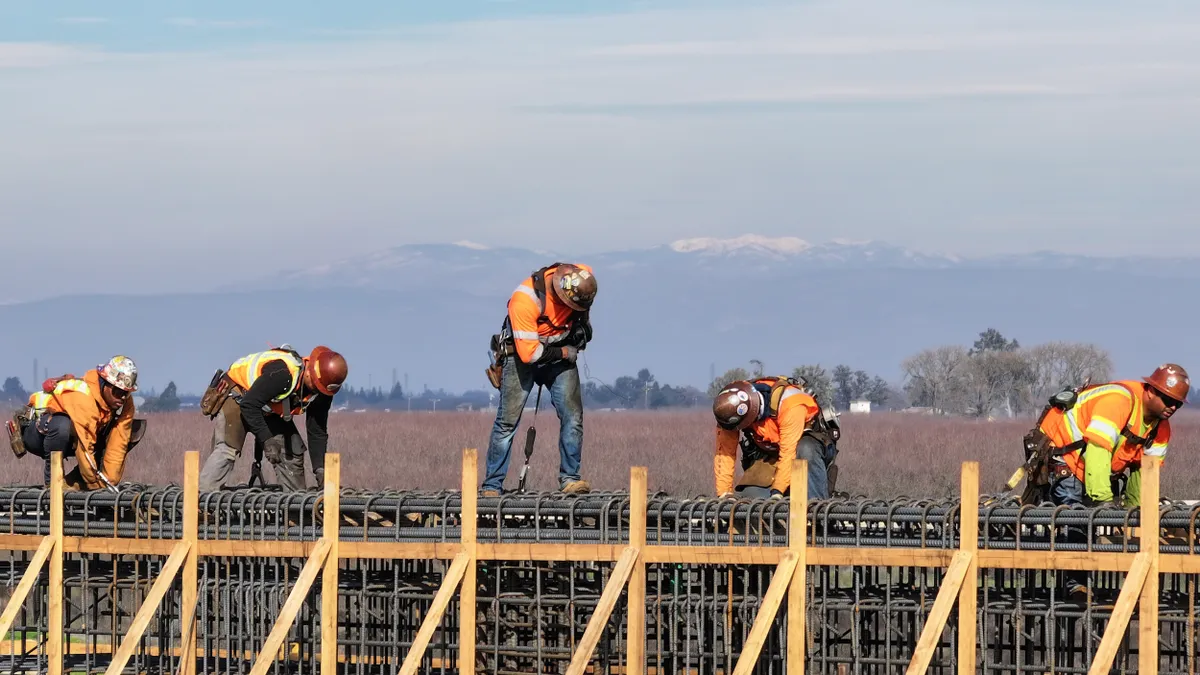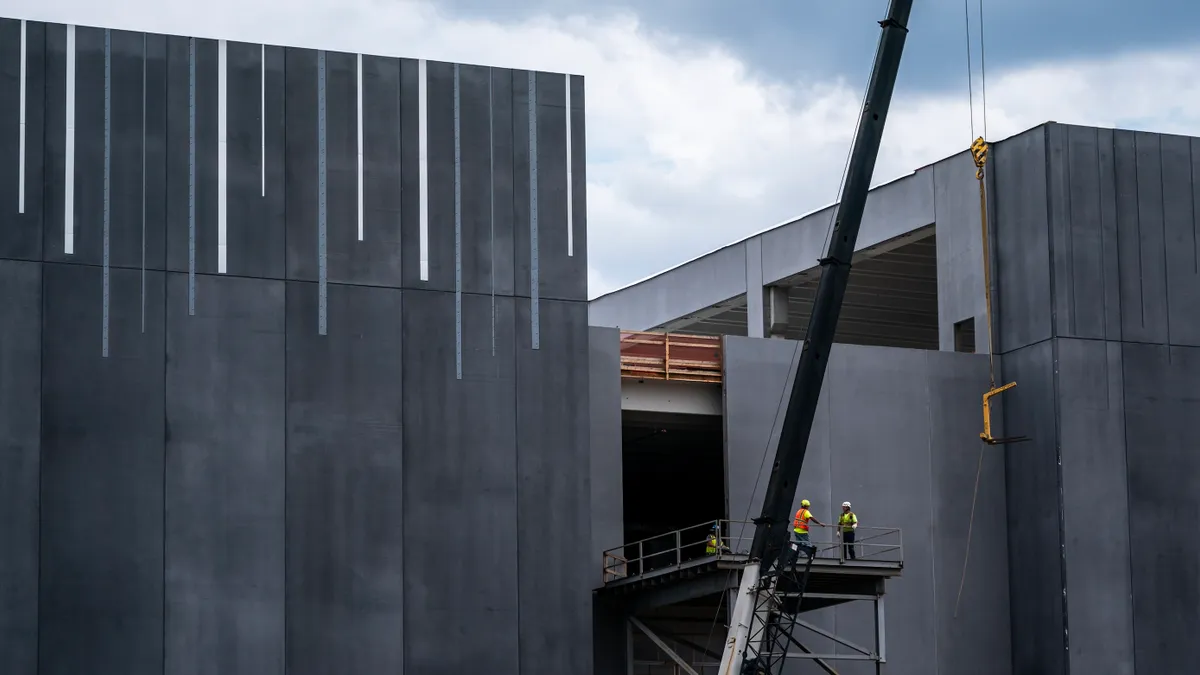In the construction industry, the term “specialty contractors” usually refers to subcontractors who deal exclusively with one piece of the construction process like metal framing, flooring or curtain walls. However, all but the largest conglomerates are niche contractors in some way.
Some focus on public work, while others work only in the private sector. And some target particular markets like schools, hospitals, industrial facilities, multifamily, data centers or bridges.
Growth is the goal of many construction companies, and some owners dream of expanding into new lines of business. However, before trying to make headway in another niche, there are important factors contractors should consider.
Private v. public work
Construction companies get into a rhythm when they’re focused on a niche. There is usually a fairly predictable flow of invoicing, receipt of payments, paperwork deadlines, work hours and other management functions. Dealing with different customers and new types of projects, though, can present challenges on many fronts.
One of the bumpiest transitions, said Bill Fischer, partner at accounting and consulting firm Grassi & Co, can happen when a contractor that is accustomed to working in the private sector pursues public projects.
Many of those contractors, he said, step into a world of compliance issues they have never dealt with. Having to pay, track and pay prevailing wage rates is one. These rules make a job more expensive if the firm's previous private-sector work did not have such requirements.
Underestimating this or the other extra compliance costs related to public work during the procurement process could be disastrous for a new player that all of a sudden finds itself the low bidder for a project that will start off saddled with over-budget items before even breaking ground.
And about those draw payments: invoice turnaround time on public projects can be much slower.
"There's a lot of bureaucracy involved,” said James Miller, partner and member of Marcum LLP’s national construction industry group. “And then you're really at the mercy of that process of getting (pay) requisitions processed by public entities, which tends to take a lot longer than private jobs. If you don't have the history of managing your business based on those types of terms, that's where we see a lot of companies fall.”
This can lead to the kind of cash flow issues, he said, that can put a contractor into a different risk category with lenders, particularly when the bank or credit issuer digs into the state of the company’s operations and sees that taking on projects in new markets is causing a disruption.
“The last thing you want to do is tarnish your reputation of being a good, honest builder.

Bill Fischer
Partner at accounting and consulting firm Grassi & Co.
The culture of public work is also very different from that of the private sector, Miller said.
“When you're in the private sector,” he said, “you tend to focus on relationships.” That includes leveraging those relationships in order to successfully negotiate for better payment terms and schedule adjustments, as well as to facilitate change orders and the resolution of other issues.
And, as those relationships grow and thrive, referrals can lead to new work and other fruitful customer relationships.
Not so with public work. Yes, it’s important to have a good relationship with government procurement officers, but they have little leeway as far as contract administration and certainly can’t negotiate future work, at least for the most lucrative contracts. There are pre-qualification requirements that all contractors must meet, and, when there are problems on a job, Miller said, they are typically not solved face to face but by a designated group to which the contractor submits the necessary documentation.
Diversity goals could also be new to a contractor that hasn’t done much work in the public arena, Fischer said. Rather than being able to automatically tap into a stable of suppliers and subcontractors, a general contractor could be forced to source companies from a limited pool of woman-, minority- and disabled veteran-owned businesses.
Learning curve
No matter the niche, Fischer said, there is a learning curve as it relates to the nuances of that sector, particularly when it comes to technical proficiency — acquiring the skills and accumulating the necessary expertise in order to provide a quality product. It’s easier, he said, to build a building for a college than it is to build one for a hospital network, for instance, because you have a lot of special construction requirements, like the installation of hospital equipment, compliance with health codes and building standards unique to medical facilities.
When contractors are trying to make such a leap, Miller said, a numbers review sometimes convinces them to stick to their strengths.
“When you do a post mortem, benchmark your clients, do … an historical review and (compare that to) an industry average, you can see some trends as to what a company's true sweet spot is based on what their current operations support,” he said, and the common discussion point is, “Do what you do well, and keep doing that.’”
Miller said some of his contractor clients are willing to take some hits upfront in order to build up the necessary experience in a new niche, but others roll back when faced with negative information about their ability to carry the new work financially and otherwise.
If a contractor is intent on making a change, Fischer said, “You do it at a slow, controlled pace.”
Niche within a niche
To build up expertise, Fischer said, try to partner with a company in the field but that needs some additional capacity or team up with young company trying to break in (although they might be hesitant to help a future competitor build its business).
Another way of expanding that doesn’t make the transition so hard is to take enter new markets within an existing niche. Kentucky-based Gray Construction is a leader in the manufacturing and production facility niche but contracts for different types of projects under that umbrella.
Gray’s expertise has grown to include food and beverage, automotive and distribution facilities as well, including fulfillment centers for Amazon. Recently the company marked the opening of new kitchens and production facility for Champion Petfoods — a niche within a niche — in Acheson, Alberta, Canada.
“Economic matters may impact a certain market at any given time,” said Marcus Taylor, director of business development at Gray, “but having a diverse market approach, as well as service offerings, helps mitigate this risk.”
Again, caution, Fischer said, is the watchword so that contractors don’t end up dealing with overwhelming compliance, operational or financial problems that can infect the successful business with which they started.
“The last thing you want to do is tarnish your reputation of being a good, honest builder,” he said.






















